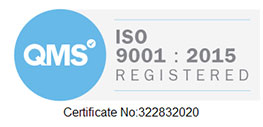As part of G99 / Grid compliance studies, it is necessary to carry out a series of Frequency Control studies. This is to show how the system respond to over-frequency and under-frequency events, when operating in LFSM or FSM mode. These are both types of power-frequency droop control.
LFSM mode is the usual operating mode for most generators in the UK. It is intended to provide backup response in the event of large frequency deviations – when the frequency rises above 50.4Hz, or falls below 49.5Hz. The allowable range is between 2-10%, but in practice most operators would select a droop of 4% to 5%.
FSM is less common in the UK, and is intended for generators that are able to respond continually to frequency deviations from nominal 50Hz. The allowable range is between 3-5%, but in practice most operators would select a droop of 4%.
Interestingly FSM, may well be replaced by battery storage systems providing the Dynamic Moderation and Dynamic Regulation services.
For Type B plants, a simple LFSM-O study is carried out to show the system unloading to a specific frequency ramp. For these types of plants the response is generally assumed to be located at the local generator level, but on some plants can be implemented in the Power Park Controller instead.
For Type C / D plants the situation is a bit more complex. It is split into over-frequency events, and under frequency events. For these types of plants the response is assumed to be controlled by the Power Park Controller
For over-frequency events, compliance is demonstrated via a load rejection islanding study for LFSM-O is carried out. This study is a bit odd, it was originally part of the Grid Code and intended for plants with islanding capability, and seems to have drifted into G99 where such capability is not really necessary. It will be updated one day soon (i hope). The same study is repeated to demonstrate FSM-O capability. As the islanding study can be a bit problematic a further study is carried out with a fast frequency ramp of +2Hz over 1s applied.
For under-frequency events, compliance is simpler, the plant is set to 80% of registered capacity, and then an under-frequency ramp is applied, to show the plant increasing its power output.
If you would like to know more get in touch.



